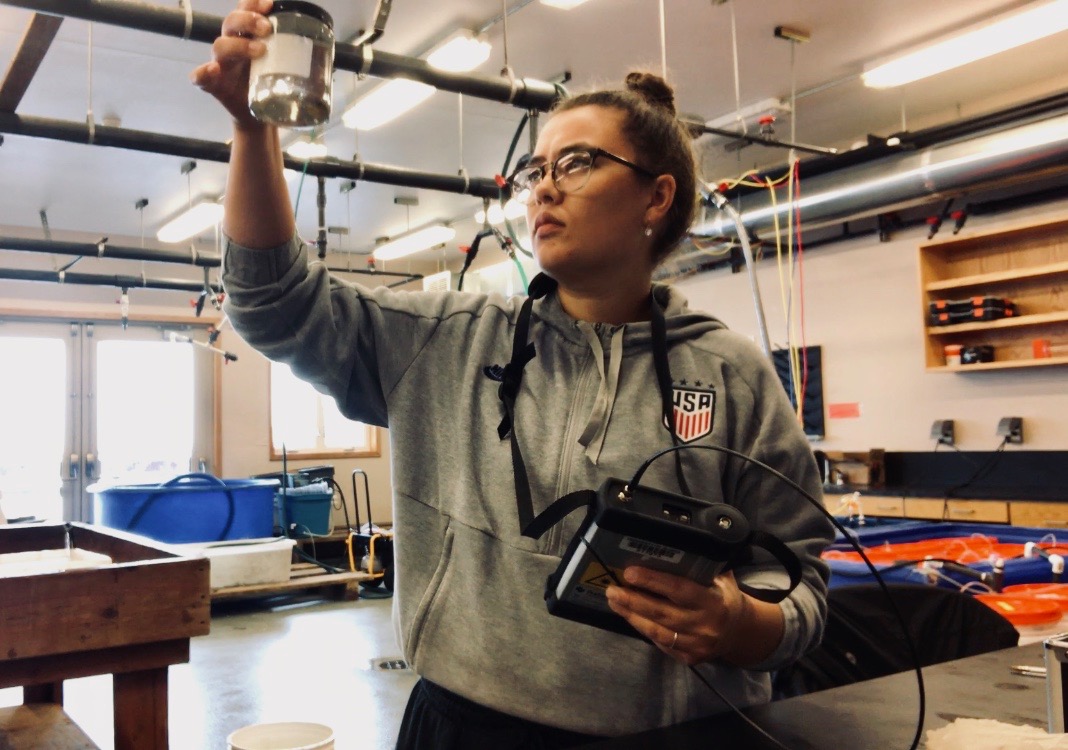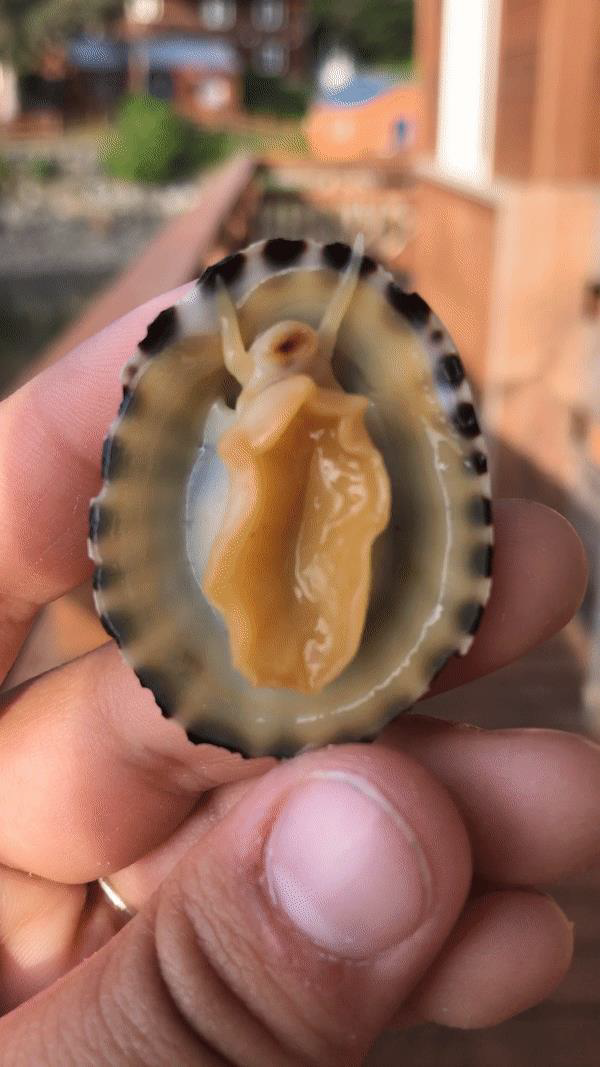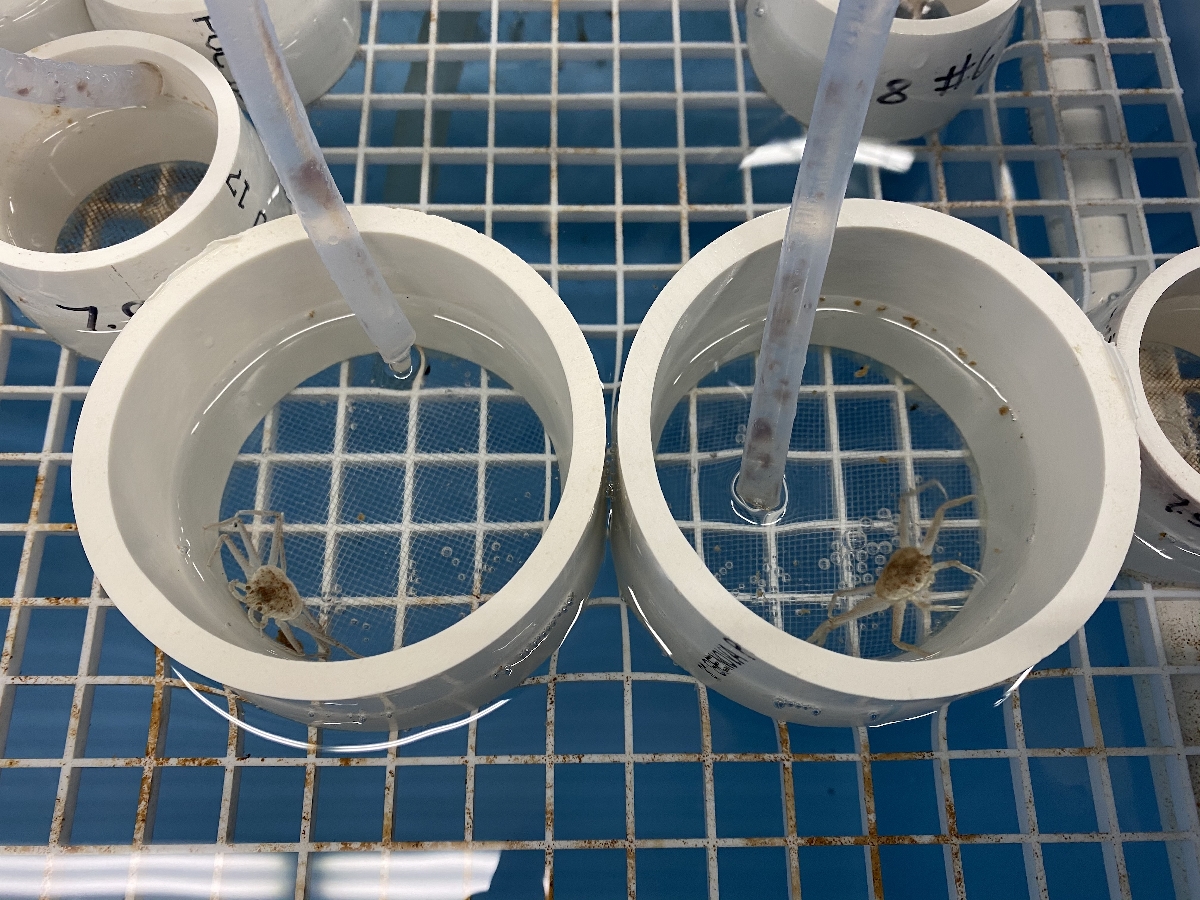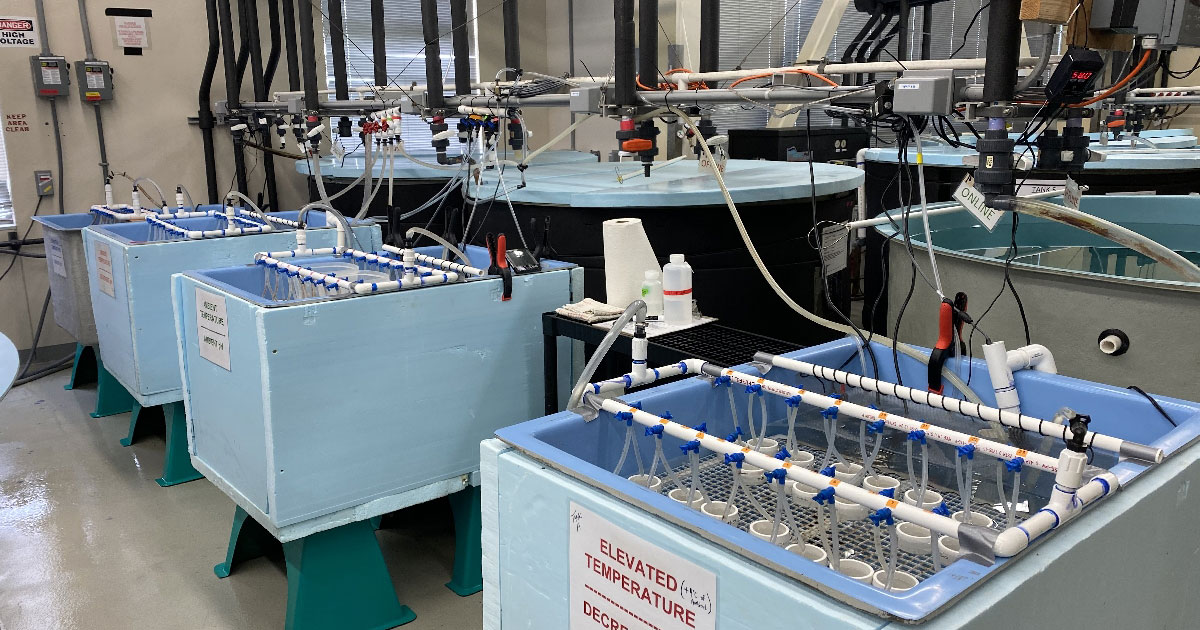Warmer, more acidified water increases stress in a species of limpet in Alaska’s Kachemak Bay, a University of Alaska Fairbanks graduate student has found.
Shelby Bacus’ discovery, along with her ongoing study of Bering Sea crabs, adds to scientific understanding of how much environmental change marine species can tolerate.
In a recently published paper, Bacus and associate professor Amanda Kelley, both at the UAF College of Fisheries and Ocean Sciences, described the responses of Pacific plate limpets to temperatures and pH levels matching a future worst-case climate warming scenario.

UAF graduate student Shelby Bacus performs ocean warming and acidification experiments on marine invertebrates. (Image credit: Shelby Bacus)
Pacific plate limpets, named for their flattened, cone-shaped shell over a suction-cup foot, graze upon algae in Kachemak Bay’s rocky intertidal zone. They regulate the growth of algae, which can limit the ability of other organisms to grow or establish themselves in the zone.
In Bacus’ experiments, the limpets showed increased cortisol levels and metabolic rates—both signs of stress—when exposed to increased temperatures and lowered pH levels. Increased stress makes it more difficult for organisms to maintain normal functions, growth, or reproduction.
Previous studies have found that many marine species that have acclimated to higher temperatures develop an increased range of tolerance to higher temperatures. Bacus’ limpets reacted somewhat differently to exposure to warmer water.
She found that limpets that had been acclimated to warmer water for 90 days had a lower tolerance to further-increasing temperatures than did limpets that had remained in present-day temperatures.

Pacific plate limpets like this one regulate algae growth in the intertidal ecosystem. (Image credit: Shelby Bacus)
However, limpets that had been exposed to both warmer water and lowered pH had the least tolerance of even higher heat and lower pH, Bacus found.
Bacus exposed the limpets to the worst-case temperatures and pH levels forecast for 2100 by the Intergovernmental Panel on Climate Change in its Representative Concentration Pathway 8.5 scenario. That’s a global mean sea surface temperature increase of 4 degrees Celsius from a pre-industrial age baseline and a 0.4 unit decrease in ocean surface pH (about a 150 percent increase in ocean acidification).
As an undergraduate student at the University of California Davis, Bacus previously studied another type of gastropod—intertidal snails. In those studies, lower pH levels rendered the snails incapable of responding to predators, probably because the acidified environment interfered with neurochemical pathways.
But Pacific plate limpets’ responses to predators were only slightly affected by lower pH, Bacus found. Limpets hold tenaciously upon rocks, but when they sense the presence of a predator such as the mottled sea star, they respond by wobbling or spinning.

Temperature and pH changes affected growth of these Tanner crabs in experiments simulating ocean conditions forecasted by the Intergovernmental Panel on Climate Change. (Image credit: Shelby Bacus)
Bacus is now studying the effects of temperature and pH on Tanner and snow crabs in the Bering Sea. Both species have supported large commercial fisheries. The Bering Sea snow crab fishery closed for the first time last fall following a massive snow crab die-off event. The Tanner crab fishery has since reopened in some sections but remains closed in others.
Although her crab research is not yet complete, Bacus is observing similar responses in metabolic stress to that of the snails and limpets. Warmer temperatures and lower pH appear to have mixed effects on Tanner crab growth rates. Snow crabs, however, were highly vulnerable to the combination of increased heat and decreased pH in her experiments, she found.
Bacus gathered data on crab population size this past summer with the National Oceanic and Atmospheric Administration’s bottom trawl surveys.
This material is based upon work supported by the National Science Foundation under Cooperative Agreement No. 1757348.
Any opinions, findings and conclusions or recommendations expressed in this material are those of the author(s) and do not necessarily reflect the views of the National Science Foundation.



